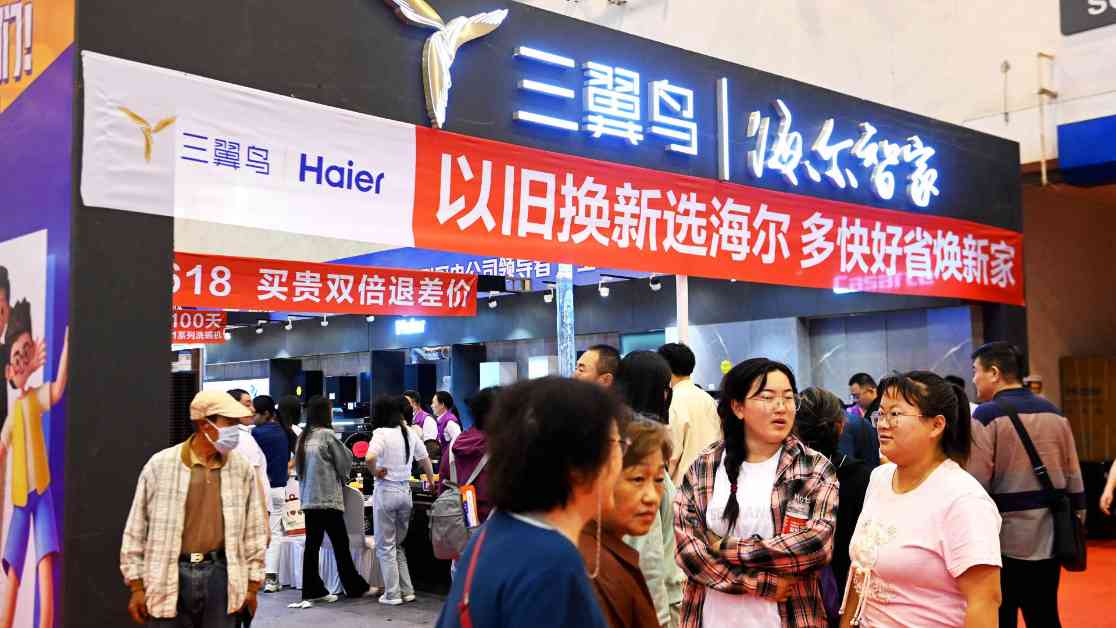China’s Trade-In Program for Boosting Consumption: Impact and Progress
China’s trade-in policy aimed at boosting consumption has been a hot topic of discussion in recent months. With the allocation of 300 billion yuan ($41.5 billion) in ultra-long special government bonds, the Chinese government is making a concerted effort to encourage consumers to trade in their old products for new ones. However, the impact of this program on the economy and the progress made so far have been a subject of debate among businesses and analysts.
The Initial Rollout of the Trade-In Program
The trade-in program was officially announced in July, with half of the allocated funds intended for subsidizing trade-ins of cars, home appliances, and other big-ticket consumer goods. The remaining amount is designated for supporting upgrades of large equipment such as elevators. Local governments have the flexibility to use the ultra-long government bonds to subsidize certain purchases by consumers and businesses. While the move was unexpected, there are concerns about the practicality of the program and its effectiveness in stimulating consumption.
According to Jens Eskelund, president of the EU Chamber of Commerce in China, there has been little evidence of tangible incentives on the ground following the announcement of the trade-in policy. Companies are still waiting to see how these measures will translate into actual benefits for consumers. Eskelund emphasized the need for a focus on execution to ensure visible and measurable results from the program.
Analysis of the Trade-In Program
The EU Chamber of Commerce in China conducted an analysis of the central government policy and found that the total budgeted amount equates to approximately 210 yuan ($29.50) per capita. However, given that only a portion of this amount will reach household consumers, it is unlikely that the scheme alone will have a significant impact on increasing domestic consumption. Analysts remain cautious about the potential of the trade-in program to drive retail sales in the country.
UBS Investment Bank Chief China Economist Tao Wang estimated that the new trade-in program could support around 0.3% of retail sales in 2023. While this may provide a boost to the economy, the overall impact is expected to be limited. Retail sales figures for August are eagerly awaited, especially considering the modest growth seen in June and July. Despite the challenges, new energy vehicle sales have shown promising growth, indicating some positive outcomes from the trade-in policy.
Challenges and Opportunities in the Market
One of the key areas targeted by the trade-in program is the modernization of elevators in China. With a significant number of elevators in service for more than 15 years, there is a pressing need for upgrades and replacements. However, major foreign elevator companies have reported a lack of specific new orders under the program. Companies like Otis and Kone are still in the early stages of understanding how the funding will be allocated and utilized for equipment upgrades.
Sally Loh, president of Otis in China, highlighted the interest from local governments in deploying the central government funding effectively for elevator replacements. The funding provides a solution to some of the financing challenges faced by customers, which is crucial for driving the modernization of elevators in residential buildings. Despite the initial uncertainties, both Otis and Kone see the trade-in program as an opportunity to grow their businesses and support sustainable practices in the industry.
Impact on the Secondhand Market
The trade-in program also has implications for the secondhand goods market in China. Companies like ATRenew, which specialize in processing secondhand goods, see the policy as a long-term opportunity for market development. While the immediate impact may be limited, the support for trade-ins could pave the way for more government initiatives to promote the secondhand market. ATRenew has seen an increase in trade-in orders from platforms like JD.com, indicating a growing interest in secondhand products among consumers.
Rex Chen, CFO of ATRenew, emphasized the importance of government support for building trade-in kiosks in neighborhood communities. This would facilitate the exchange of secondhand goods and encourage more sustainable consumption practices. With the trade-in program gaining traction in specific categories and regions, there is potential for further growth in the secondhand market in China.
In conclusion, China’s trade-in program for boosting consumption has the potential to drive economic growth and promote sustainable consumption practices. While there are challenges in the implementation of the program, businesses and analysts remain cautiously optimistic about its long-term impact. By addressing key areas such as equipment upgrades and secondhand goods trading, the trade-in policy could serve as a catalyst for innovation and development in the Chinese market.














